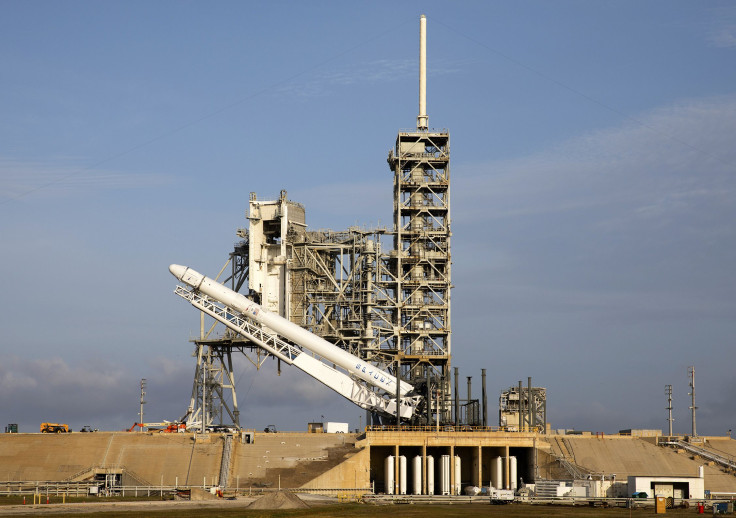SpaceX ISS Cargo Mission CRS-11 Live Stream: Watch Falcon 9 Take Off On NASA Mission, If Weather Permits

UPDATE: 5:11 p.m. EDT — SpaceX has made another successful launch of its Falcon 9 rocket Saturday evening, sending a Dragon cargo spacecraft on its way to the International Space Station, the company’s eleventh commercial trip to the ISS for NASA. The first stage of the rocket made a successful landing as well.
Falcon 9 first stage has landed at LZ-1. pic.twitter.com/qUANJo402a
— SpaceX (@SpaceX) June 3, 2017
UPDATE: 4:29 p.m. EDT — With under 40 minutes before the SpaceX cargo mission takes off for the International Space Station (ISS), NASA said the weather forecast for the launch window had improved to 90 percent chance of favorable conditions.
The mission to resupply the ISS would be the eleventh for the Elon Musk company, and the first to fly a reused Dragon spacecraft. The Falcon 9 rocket carrying it was originally scheduled to take off Thursday evening, but the launch was scrubbed due to unacceptable weather conditions.
Original story:
Elon Musk’s company SpaceX will attempt to launch a Falcon 9 rocket Saturday evening, in a bid to send a refurbished Dragon cargo spacecraft to the International Space Station (ISS). The CRS-11 mission is the eleventh for the commercial space company and was originally scheduled for Thursday evening, but had to be postponed due to weather conditions.
Standing down due to lightning. Backup launch opportunity on Saturday, June 3 at 5:07 p.m. EDT or 21:07 UTC.
— SpaceX (@SpaceX) June 1, 2017
The weather could play spoilsport once again Saturday, which has an instantaneous launch window at 5:07 p.m. EDT. According to forecast by meteorologists with the U.S. Air Force 45th Weather Squadron, announced Friday morning, there was a 60 percent chance of favorable weather at the time of the planned launch. That forecast was worse than the 70 percent favorable forecast announced Thursday night.
“The primary weather concerns for Saturday’s launch are anvil clouds, cumulus clouds and flight through precipitation,” the forecast announcement on NASA’s website said.
Read: International Space Station Getting Module To Study Neutron Stars
The Dragon spacecraft is carrying about 6,000 pounds of cargo that includes a number of supplies, scientific modules and experiments. One of those modules will allow the space station to study neutron stars, while another will upgrade its microscope to enable 3D imaging. An experiment will allow scientists to study the behavior of flames in space. Some of the other experiments being sent to ISS can be read about on NASA’s website.
Following liftoff, the first and second stages of Falcon 9 will separate two minutes and 25 seconds later, according to the mission overview. The Dragon spacecraft will separate from the second stage about another eight minutes later, and head to the ISS, where the crew members will use the orbiting laboratory’s 57.7-foot robotic arm to capture the spacecraft. The Falcon 9 first stage, meanwhile, would attempt to land at SpaceX’s landing zone at Cape Canaveral Air Force Station in Florida.
Dragon will spend about one month attached to ISS, after which it will return to Earth. “About five hours after Dragon leaves the station, it will conduct its deorbit burn, which lasts up to 10 minutes. It takes about 30 minutes for Dragon to reenter the Earth’s atmosphere and splash down in the Pacific Ocean off the coast of Baja California,” SpaceX explained in the mission overview.
Read: Space Station Microscope To Get 3D-Imaging Upgrade
CRS-11 is the first SpaceX mission that will use a refurbished Dragon spacecraft, and Saturday’s flight, if successful, will mark the 100th launch from Launch Complex-39A at the Kennedy Space Center, Florida. The company had launched its first reused Falcon 9 rocket on March 30.
NASA will start coverage of the launch at 4:30 p.m. EDT on NASA TV, and it can be seen on this page. The SpaceX webcast of the launch can be seen below.
© Copyright IBTimes 2024. All rights reserved.











